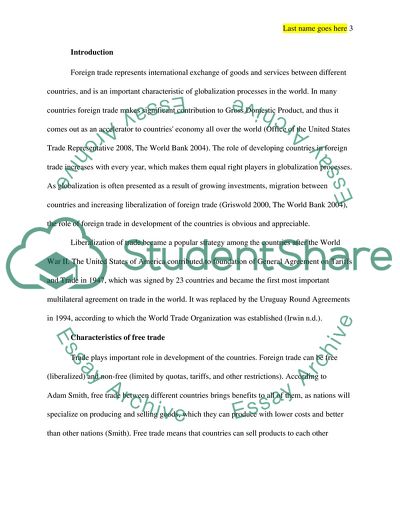Cite this document
(Explore the ways in which foreign trade can accelerate the growth of Essay, n.d.)
Explore the ways in which foreign trade can accelerate the growth of Essay. https://studentshare.org/macro-microeconomics/1856402-explore-the-ways-in-which-foreign-trade-can-accelerate-the-growth-of-developing-countries-and-discuss-the-government-policies-and-strategies-most-favourable-to-trade-liberalisation
Explore the ways in which foreign trade can accelerate the growth of Essay. https://studentshare.org/macro-microeconomics/1856402-explore-the-ways-in-which-foreign-trade-can-accelerate-the-growth-of-developing-countries-and-discuss-the-government-policies-and-strategies-most-favourable-to-trade-liberalisation
(Explore the Ways in Which Foreign Trade Can Accelerate the Growth of Essay)
Explore the Ways in Which Foreign Trade Can Accelerate the Growth of Essay. https://studentshare.org/macro-microeconomics/1856402-explore-the-ways-in-which-foreign-trade-can-accelerate-the-growth-of-developing-countries-and-discuss-the-government-policies-and-strategies-most-favourable-to-trade-liberalisation.
Explore the Ways in Which Foreign Trade Can Accelerate the Growth of Essay. https://studentshare.org/macro-microeconomics/1856402-explore-the-ways-in-which-foreign-trade-can-accelerate-the-growth-of-developing-countries-and-discuss-the-government-policies-and-strategies-most-favourable-to-trade-liberalisation.
“Explore the Ways in Which Foreign Trade Can Accelerate the Growth of Essay”. https://studentshare.org/macro-microeconomics/1856402-explore-the-ways-in-which-foreign-trade-can-accelerate-the-growth-of-developing-countries-and-discuss-the-government-policies-and-strategies-most-favourable-to-trade-liberalisation.


